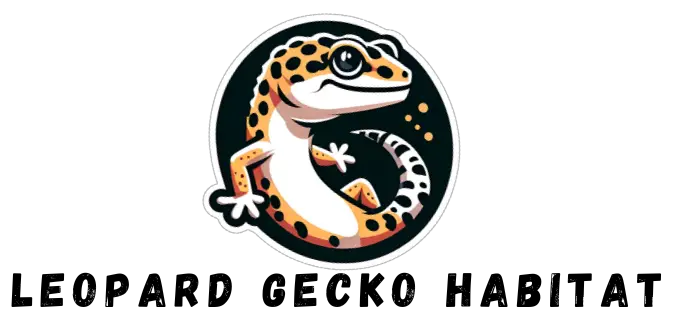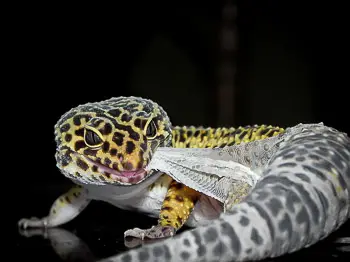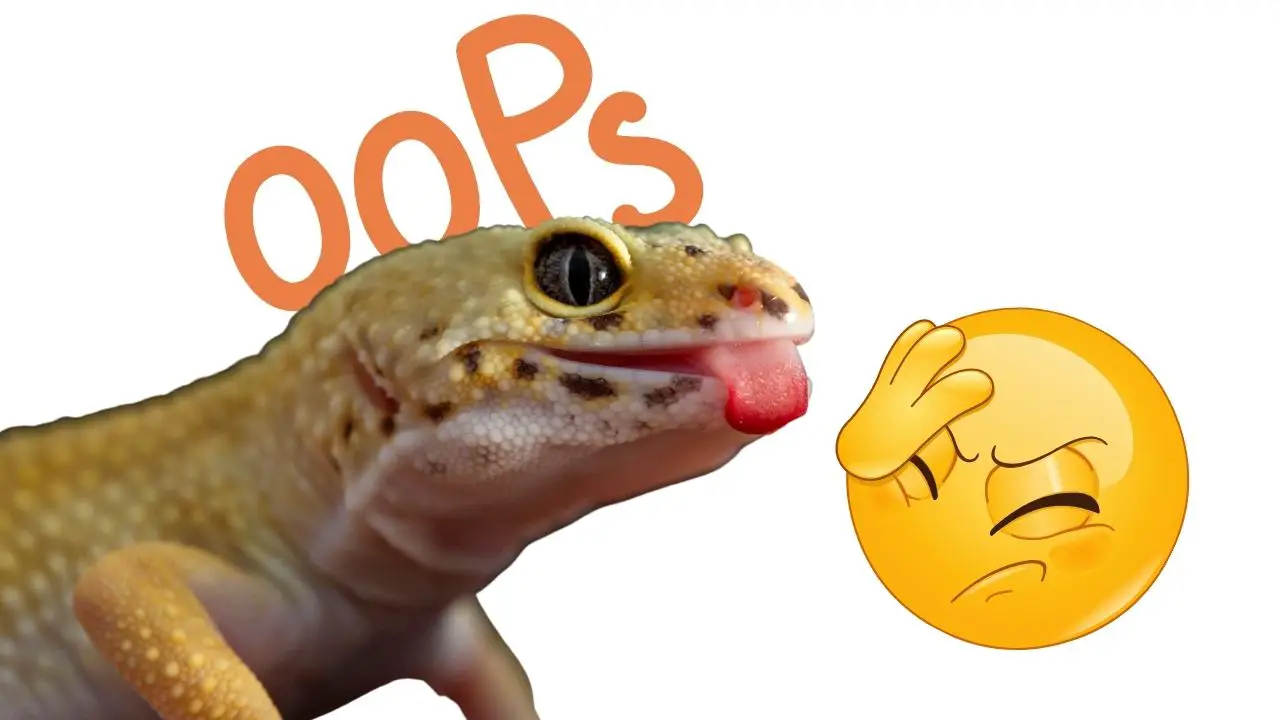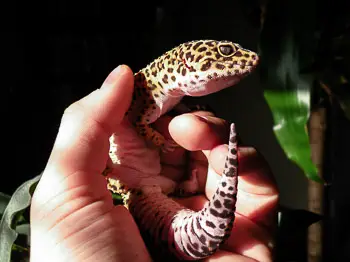Many reptile species shed their skin. This is also referred to as sloughing. The leopard gecko is no different and you may observe it shedding its skin.
Why Do Leopard Geckos Shed Their Skin?
Leopard geckos shed their skin for the same reasons other reptiles do. In a word: Growth. Their old skin no longer fits because the lizard has outgrown it.
Think back to when you were a child; How often do you recall going shopping for new clothes? If you’re a parent, think of how rapidly your baby grew out of outfits, and how often you needed to buy new clothes for children. A child outgrowing their clothes is a good analogy for a reptile growing out of its skin.
How Often do Leopard Geckos Shed?
Young leopard geckos will shed frequently, perhaps every few weeks, as they are growing at a rapid rate during this stage. This pace will slow down as the leopard gecko gets older and reaches full size. There is no hard and fast schedule, and some sheddings may be closer together (wait, didn’t it *just* shed?) and sometimes it may seem like ages between sheddings. Adult leopard geckos may shed once every four to six weeks.
How can I tell when my Leopard gecko is ready to shed?

Your leopard gecko’s skin will become less vibrant and start to take on a milky white appearance as the old skin prepares to shed. It will look like your gecko’s color is fading and it may look pale. This may start a day to a day and a half prior to shedding, so you should have an advance indication that the shedding is coming soon.
How can I help my Leopard Gecko shed its skin?
Shedding is a natural process, and in most cases it’s best to just let nature take its course. Moisture and humidity help; If your enclosure has a separate moist hide your gecko will make use of it to shed.
Moisture
If your enclosure just has a hot and cool hide, one hide can double as a moist hide. When your leopard gecko’s skin starts to turn white, you can place some damp paper towels (damp, not wet) to create a moist hide. Some leopard gecko owners place sphagnum moss in the hide for this purpose. You can also use a spray bottle filled with water to mist the enclosure.
Rough Objects
Your gecko will rub itself on rough surfaces and bite the skin to peel it off. (You do have some rough stones, branches, or décor that the gecko can rub against, right?) Note these should be rough, not sharp. Read our article about using natural rocks in your tank.
We also use some natural bark and branches that seem to work nicely, as well as a large flat rock that the gecko can rub up against.
What do I do if the skin gets stuck?
In most cases, the skin should come off without any trouble. Occasionally a few pieces of skin may be difficult for the gecko to remove, especially if it gets stuck on the head. You should do your best to let the gecko try to resolve the situation itself, and only step in when the animal is getting stressed and it’s clear that assistance is needed.
Light misting with a spray bottle may help loosen the skin. You can *gently* peel the skin back, pulling slowly as close to where the old skin is separating from the new. Do Not just rip it off. Think of it like removing a band aid.
Another trouble spot while shedding is the toes. This is more delicate. Soaking your gecko’s feet in lukewarm water may help. If the skin is still stuck, gently rubbing with a cotton swab may be enough to get it loose enough.
In more severe situations, if shed skin remains on the toes it may be cause for a visit to a vet. There may be a risk of the old skin cutting off circulation, which presents a risk of losing the toe or toes that are constricted.
Related Post: If you need to help removing stuck shedding, find out how to safely give your gecko a bath,
My gecko ate the skin! Is that normal or healthy?

Yes, eating the shed skin is perfectly normal. There are nutrients in the skin, so the gecko will naturally consume the skin as it peels off. It takes quite a bit of energy to shed and peel off the old skin. The easiest way to replace that energy is by eating the skin itself. Waste not, want not!
Some experts believe that the leopard gecko eats its shed skin so there is no trace of its presence for predators. It’s easier to eat it than hide it, and there isn’t any evidence for a predator to pick up the scent.





